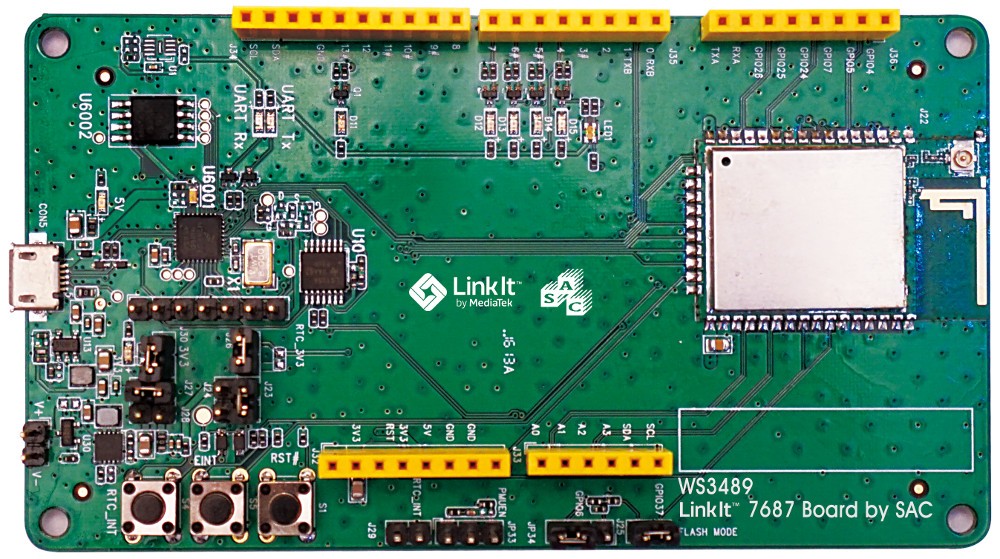Mediatek is now opening its account in the IoT zone with its MediaTek LinkIt™ Development Platform for RTOS and Hardware Development Kit (HDK) as a pilot.
and Hardware Development Kit (HDK) as a pilot.
The program would assisst in creating APIs for multiple chip-set which will offer developers to potray their skills and create a range of IoT devices using this software development kit which is the MediaTek LinkIt SDK v3.
The HDK is based on the MediaTek MT7687F Wi-Fi system-on-chip (SoC) which enables the developers to create and connect appliances whether at home or office automation, Develop smart Internet Of Things applications.
The IoT platform features:
- FreeRTOS with modules (source code available) for TCP/IP, SSL/TLS, HTTP (client and server), SNTP, DHCP daemon, MQTT, XML and JSON.
- Supports SoCs based on the ARM Cortex-M4 architecture, offering high performance, low power connectivity.
- Comprehensive support for peripheral interfaces; such as UART, I2C, SPI, I2S, PWM, IrDA and ADC.
- Chipset specific features support, such as Wi-Fi using the MT7687F.
- Development and debugging support in Keil μVision and with command-line tools.
The LinkIt 7687 HDK is developed by Silicon Application Corp. (SAC)using boards designed by Mediatek. The HDK s highly advantageous for new developers as it offers low-cost, easy-to-use IoT development board for the design, prototyping, evaluation and implementation of various commercial Internet Of Things (IoT)
The features of the Board:
- MT7687F module on board. The same module is available for manufacture of final IoT products.
- Wi-Fi with integrated security engine (AES and 3DES/SHA).
- Embedded SRAM/ROM and 2MB serial flash.
- Battery (2xAA) and fixed power connection options.
- Support for essential pre-commercial testing from a debugging port, a U.FL connector and headers reserved for power consumption monitoring.
- Pinout compatible with Arduino Uno (Revision 3), with an eight-pin extension connector offering versatile peripheral connectivity, including UART, I2C, SPI, I2S, PWM, IrDA and auxiliary ADC.












